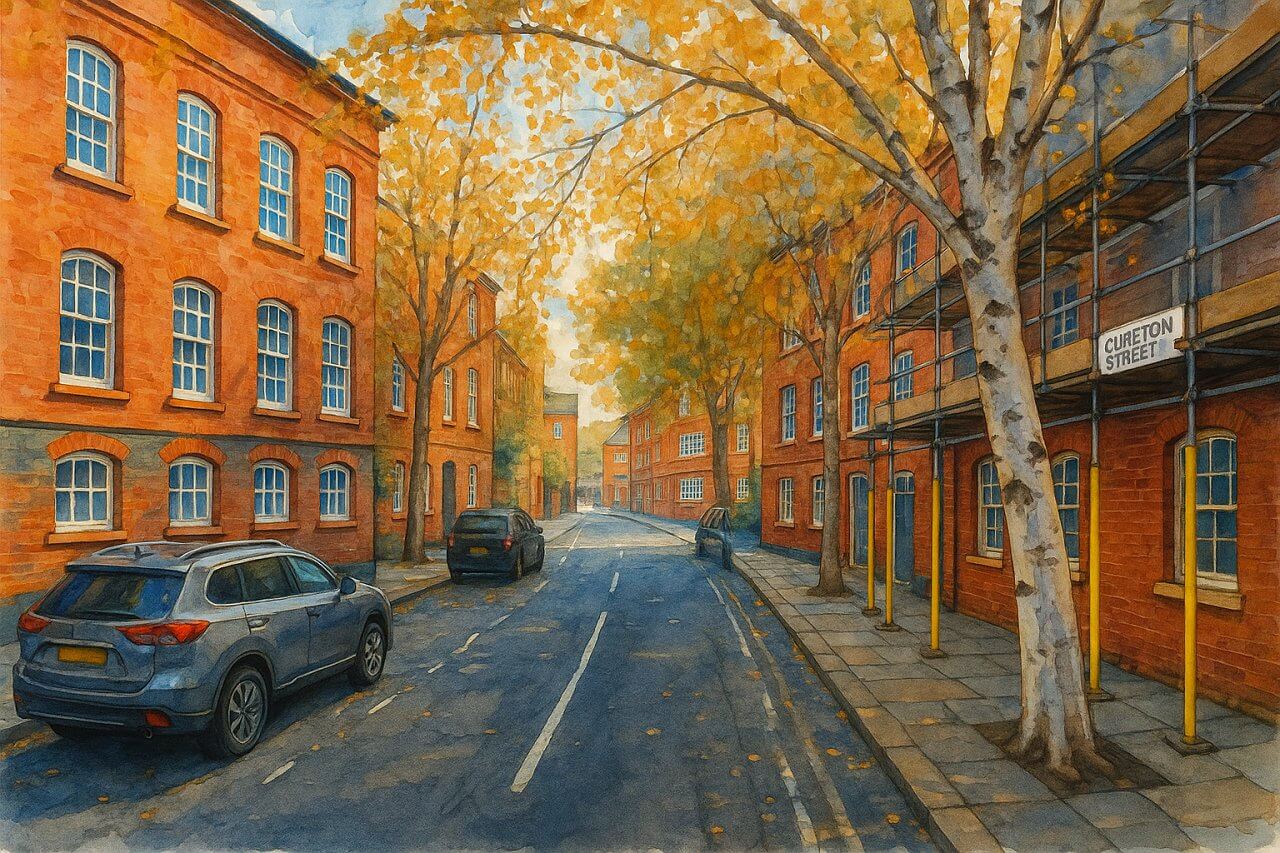
Cureton Street, London
Cureton Street is a short east-west street in the City of Westminster, Central London. It links Causton Street in the west to John Islip Street in the east, forming part of a quiet residential patch nestled between the River Thames and Millbank.
Located just south of the iconic Tate Britain and a short walk from the riverside Millbank Millennium Pier, Cureton Street is well positioned within a prestigious and historic area of the capital. It lies within the SW1 postcode district.
How Long is Cureton Street?
Cureton Street is approximately 125 metres (410 feet) in length. It runs in a relatively straight line, oriented east to west, and is primarily residential in character. Its short length makes it more of a quiet backstreet than a thoroughfare, contributing to its secluded atmosphere.
History of Cureton Street
The area around Cureton Street was historically tied to the former Millbank Prison, which stood nearby until its demolition in the late 19th century. Much of the present street layout, including Cureton Street, was developed as part of the wider post-prison redevelopment led by the London County Council and later the Westminster City Council.
Cureton Street was laid out in the early 20th century as part of a growing effort to provide housing and civic infrastructure in the wake of London's rapid expansion. The street itself appears on maps by the 1920s, when it formed part of a new network of local roads replacing the once-extensive prison complex.
How Did Cureton Street Get Its Name?
Cureton Street was named after General Sir Charles Cureton (1826–1891), a British army officer who served with distinction in colonial India. It was common at the time to name streets in new developments after military figures and civil servants of the British Empire.
The name was likely chosen around the time the street was first laid out, in the 1910s or 1920s. General Cureton was known for his military leadership and his service in campaigns such as the Indian Rebellion of 1857. The name was meant to lend a sense of patriotic respectability to the area.
How to Pronounce Cureton
Cureton is typically pronounced as "KYUR-uh-tən".
The phonetic pronunciation in the International Phonetic Alphabet (IPA) is: /ˈkjʊərətn/  .
.
Common misspellings or mispronunciations include "Curiton" or "Curetun", but the correct form retains a soft "u" and a schwa in the final syllable.
The Character of the Street
Cureton Street has a quiet, understated character. Though located in the heart of Westminster, it is shielded from the hustle and bustle by residential buildings and nearby civic offices. The street features low-rise post-war flats and purpose-built council housing, much of which was constructed in the mid-20th century.
This street is not a place for heavy traffic or commercial activity. Instead, it serves as a peaceful urban residential street with mature trees, well-kept pavements, and a calm environment suited for families and retirees alike.
Property Prices and Sizes (As of May 2025)
Property on Cureton Street is relatively affordable by Central London standards, owing to its modest scale and housing stock largely consisting of former council flats and small private conversions.
- As of May 2025, average flat prices here range from £425,000 to £550,000, depending on the size and condition of the unit.
- Typical flat sizes are around 600 sq ft (56 sq m) for one-bedrooms and 800 sq ft (74 sq m) for two-bedrooms.
Compared to the Westminster average—where two-bedroom flats often exceed £1.2 million—Cureton Street offers a more accessible price point while still delivering a prime location.
Nearest London Underground Stations
Cureton Street is well served by nearby London Underground stations, offering convenient access to the rest of the city:
- Pimlico Station – on the Victoria Line, about 7 minutes’ walk away.
- St James's Park Station – on the District and Circle Lines, roughly 12 minutes on foot.
- Westminster Station – on the Jubilee, District, and Circle Lines, approximately 15 minutes away by foot.
There are also several bus routes running along nearby Millbank and Vauxhall Bridge Road, providing additional travel options for commuters and tourists alike.
Fun Fact: Literary Neighbours
Just a stone’s throw from Cureton Street is the Tate Britain art gallery, where visitors can view some of the UK's most important historical and contemporary artworks. But few realise that this part of Westminster was also once home to Virginia Woolf and her family.
The Woolfs lived at 29 Fitzroy Square and later near nearby Victoria Street, and she would walk through Millbank and Pimlico, sometimes referencing the riverfront in her writing. The area, with its blend of civic solemnity and quiet gardens, reflects a side of London that is often overlooked by tourists.
Quick Facts
- Location: City of Westminster, SW1
- Length: ~125 metres (410 feet)
- Connects: Causton Street (west) to John Islip Street (east)
- Origin of Name: Named after General Sir Charles Cureton (1826–1891)
- Pronunciation: “KYUR-uh-tən” (/ˈkjʊərətn/)
- Character: Quiet, residential, post-war housing
- Average Property Price: £425,000–£550,000 (as of May 2025)
- Typical Property Size: 600–800 sq ft (56–74 sq m)
- Nearest Tube Stations: Pimlico (Victoria Line), St James’s Park (District, Circle), Westminster (Jubilee, District, Circle)
- Fun Fact: Located near Tate Britain and within walking distance of Virginia Woolf’s former haunts
Map of Cureton Street, London

Painting of Cureton Street, London (View image in full size)